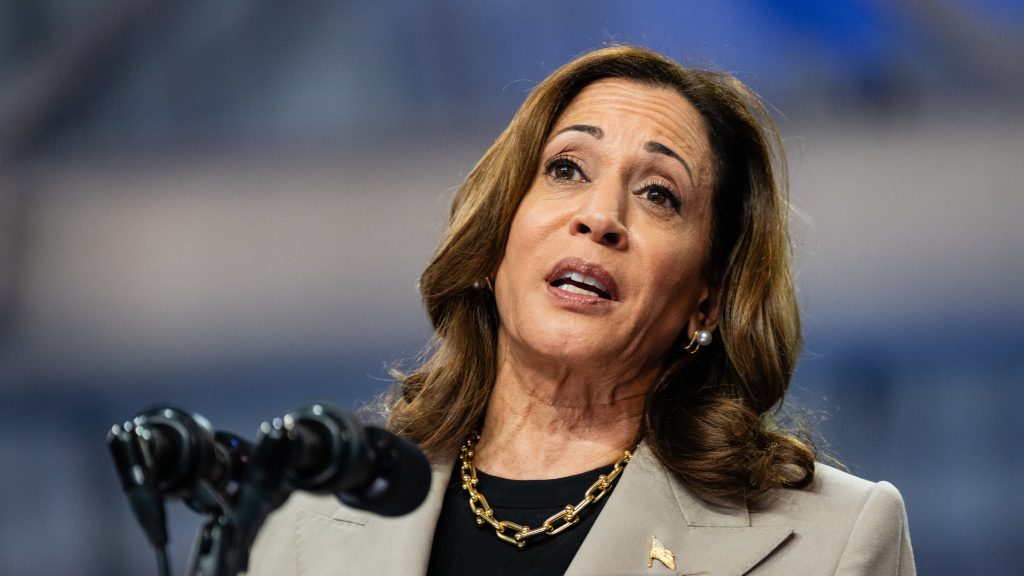
During a recent event in Pennsylvania, Vice President Kamala Harris addressed concerns from undecided voters about rising grocery prices. She proposed a national ban on price gouging during emergencies, claiming it would prevent companies from exploiting consumers’ desperation by raising prices without accountability. But does this plan truly promise relief for consumers, or could it be counterproductive?
The Context of Rising Prices
Inflation has become a pressing issue for many Americans, with a significant portion of the population feeling financially strained. In April 2024, 41% of Americans identified the high cost of living as their most significant financial concern, the highest level since 2005. Overall inflation hit 9.1% in June 2022, with food prices peaking even higher at 11.4%. Although inflation rates have since dropped below 3%, food prices remain about 27% higher than at the end of 2019.
While global inflation has affected many nations, some economists attribute part of the spike in U.S. prices to the economic stimulus policies enacted by the Biden-Harris administration. Critics argue that certain retailers exploited the disruptions caused by the COVID-19 pandemic to inflate their prices, a phenomenon referred to as “greedflation.” This concept underlies Harris’s justification for the proposed price gouging ban.
Former President Donald Trump has criticized the plan, likening it to “communist price control” reminiscent of policies in Venezuela or the Soviet Union.
Understanding the Price Gouging Plan
Harris’s proposal aims to implement a federal ban on price gouging, particularly for essential goods during emergencies. Currently, 37 states have laws prohibiting price gouging following local emergencies, such as hurricanes or wildfires. Harris’s nationwide initiative would likely resemble these state-level laws.
In 2020, while serving as a senator, Harris co-sponsored legislation that would classify price gouging as charging more than 10% above the average price before an emergency. However, when questioned about how this would reduce grocery prices more generally, Harris focused on the need to protect consumers from exploitation during crises rather than directly addressing everyday price fluctuations.
Economic Implications
The economic debate surrounding price gouging and inflation is contentious. Economist Isabella Weber from the University of Massachusetts argues there is evidence of “seller’s inflation,” where companies exploit market conditions to increase profits. She cites significant profit margin increases for corporations, like Tyson Foods, during the pandemic as evidence supporting Harris’s approach.
However, many economists contend that the primary driver of inflation has been a basic imbalance between supply and demand, rather than price gouging. A report from Oxford Economics asserts that price gouging has played a minimal role in recent inflationary trends.
Critics of government price controls argue that while price hikes may seem unfair, they can actually stimulate supply. For instance, if a snowstorm raises demand for shovels, higher prices incentivize retailers to stock up, ultimately increasing availability and lowering prices in the long run.
A 2007 study found that had a federal price gouging law been in effect after hurricanes Katrina and Rita, the economic damage could have been significantly worse due to reduced incentives for producers to supply goods. Economists typically advocate for fostering competition in the marketplace over direct price control.
Historical Context
Historically, attempts at price controls have often backfired. The Soviet Union’s price control measures led to long lines and shortages, while Venezuelan President Hugo Chavez’s food price controls resulted in chronic scarcity and rising undernourishment.
Harris’s proposal, however, is not a sweeping price control strategy; it focuses on specific goods during defined crises.
Other Proposals: Prescription Drug Costs
In addition to the price gouging ban, Harris aims to lower prescription drug prices, proposing a cap on insulin prices for all Americans. Currently, insulin is capped at $35 a month for Medicare patients, but extending this to the broader population would require private insurers to absorb the costs. Critics warn that this could lead to higher premiums across the board, potentially offsetting the savings for those needing insulin.
Similarly, her proposal to cap out-of-pocket drug costs at $2,000 annually for all Americans could inadvertently raise overall healthcare costs, as insurance companies might increase premiums to cover the difference.
Conclusion
While Kamala Harris’s price gouging plan is designed to protect consumers during emergencies, its effectiveness remains uncertain. Critics argue it could hinder market dynamics and lead to unintended economic consequences. As the debate continues, it will be essential to assess both the immediate impact on consumers and the long-term implications for the economy.








